FLIBS 2012 redo #1, Raymarine Lighthouse v5
It’s telling of the Great Convergence when the biggest electronics news of a boat show is arguably a software upgrade. I don’t mean that innovation in marine electronics has slowed down, not at all. But whereas the Big Four have now all rationalized and modernized their product lines — though in some cases it took painful operating system rebuilds — big features can often be realized just by unleashing capabilities already build into MFDs or available from sensors that may already be interfaced. We just saw two neat new Fusion 700 audio interface updates, but now consider all the features crammed into Raymarine’s Lighthouse v5 update, which was just announced the first day of FLIBS and — holy cow — is already available for all a-, c-, and e-Series MFDs…
I only got a quick look at the new fuel manager in Lighthouse 5, but it certainly seems sophisticated and reminded me of the fuel management Raymarine once developed with Yanmar (though never released for some reason). It can, for instance, overlay a fuel range circle on your chart based on real-time fuel flow, and I think it has provisions for dealing with the discrepancies possible when you measure remaining fuel both by flow and tank level sensors.
My FLIBS photo below indicates Raymarine’s new support for Ethernet IP cameras but I wish it showed better how sharp that camera looked. The huge benefit of IP cameras, though, is that you can have a virtually unlimited number of them attached to all of a boat’s MFDs without video splitters, switches and so forth, and often they can also be panned, tilted, and zoomed via the same Ethernet cabling. I believe that’s all true of Ray’s IP cam implementation but, at least for now, each MFD in the system can only display one camera output at a time. However you can set an MFD window to flip through camera outputs at a custom time interval. And if you find, say, Axis IP cameras a little pricey, perhaps you should wait a bit as FLIR just acquired Lorex, a Canadian company known for value-oriented IP and regular cams.
Another feature of Lighthouse 5 is a complete-seeming PDF reader. You just put whatever PDF documents you want on an SD card and now your Raymarine a-, c-, or e-Series MFD can browse the card as shown below…
And then display the PDF as shown in the left-hand window of this next shot. I say “seemingly complete” because while Simrad added a similar feature in its RTM2 update to the NSS series — and it’s quite useful — the Ray version let’s you search PDFs and also display them split screen, which can be even more useful. Thus, as seen below, you can study the radar section of the e7 manual while also trying out what you learn. (And note that those onscreen radar controls just came to the e-Series in the recent Lighthouse 4 update.)
Finally, for the owners of Raymarine little letter Series MFDs and Ray/FLIR thermal cameras, the big news is what looks like a pretty complete slew-to-cue feature. Slew-to-cue means that you can command your camera to pan/tilt to most any object on your chart or radar screen, and in the case of things that are being tracked — like an AIS or MARPA target — the camera can track it too. I’ve yet to try the feature on Gizmo (hoping to!), but am nonetheless convinced that it can increase the operational value of a thermal or low-light camera considerably…
I don’t think that Lighthouse 5 includes some slew-to-cue niceties like a chart overlay of the camera’s field of view which I saw in Furuno’s new TZT and FLIR implementation (which I’ll illustrate in another FLIBS entry and which further confirms FLIR’s “two brand strategy”). I’m also pretty sure that Ray’s slew-to-cue can’t yet do the hot-spot tracking that Garmin introduced with its thermal cams last February, but I’m sad to report that they’ve had to withdraw those products due to production quality issues (for more see my new comment at the end of that entry). However, Raymarine did add some automation features I hadn’t even thought of, like panning (and pitching, which is why the camera height is needed) to an MOB the instant the alarm button is pushed and holding that spot as you manuever. Come to think of it, if the MOB is triggered by an AIS MOB device like the Kannad R10, the camera should be able to track it even as the MOB moves!
Perhaps the biggest news of Lighthouse 5, though, is that in three months it will be followed up by Lighthouse 6, and in six months by Lighthouse 7, etc. etc. That’s Ray’s software development plan as I understand it, and I talked to a third party developer who says it’s highly disciplined, as in “get your code in on schedule or be bumped to the next edition.” Moreover, Ray people let me know that they were a tad miffed at my “enough already” entry (I was just kidding!) and that in fact they’d have all sorts of new stuff in Miami. While it’s fun to imagine what that might be — a g-Series for big boats, native N2K sensors, redesigned Tacktick gear? — can anyone now doubt that we are looking at a thoroughly new Raymarine?


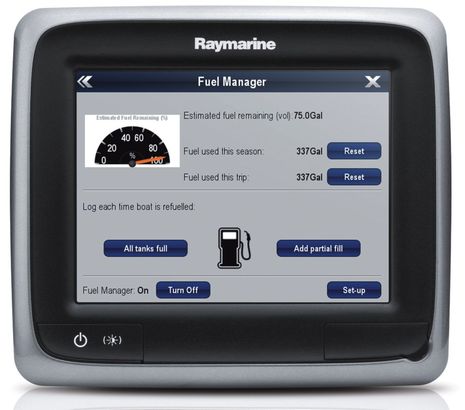
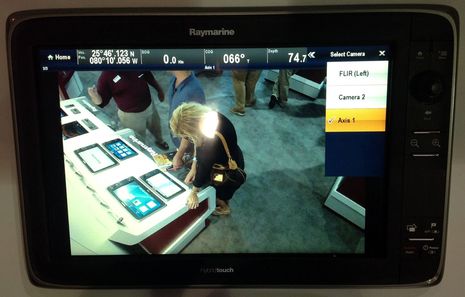
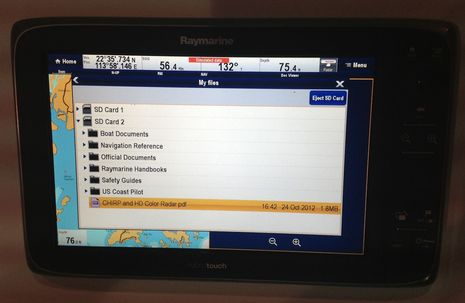
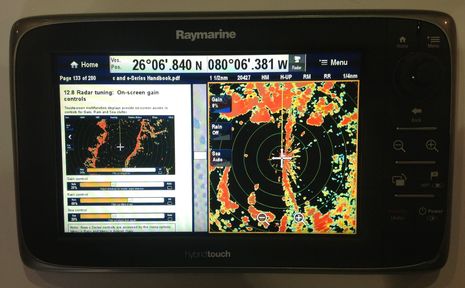
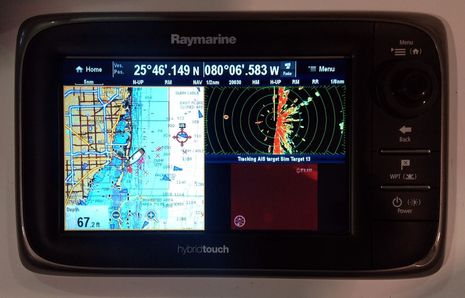
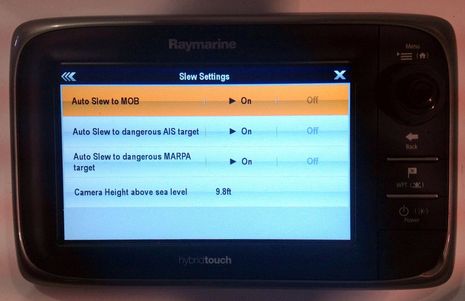
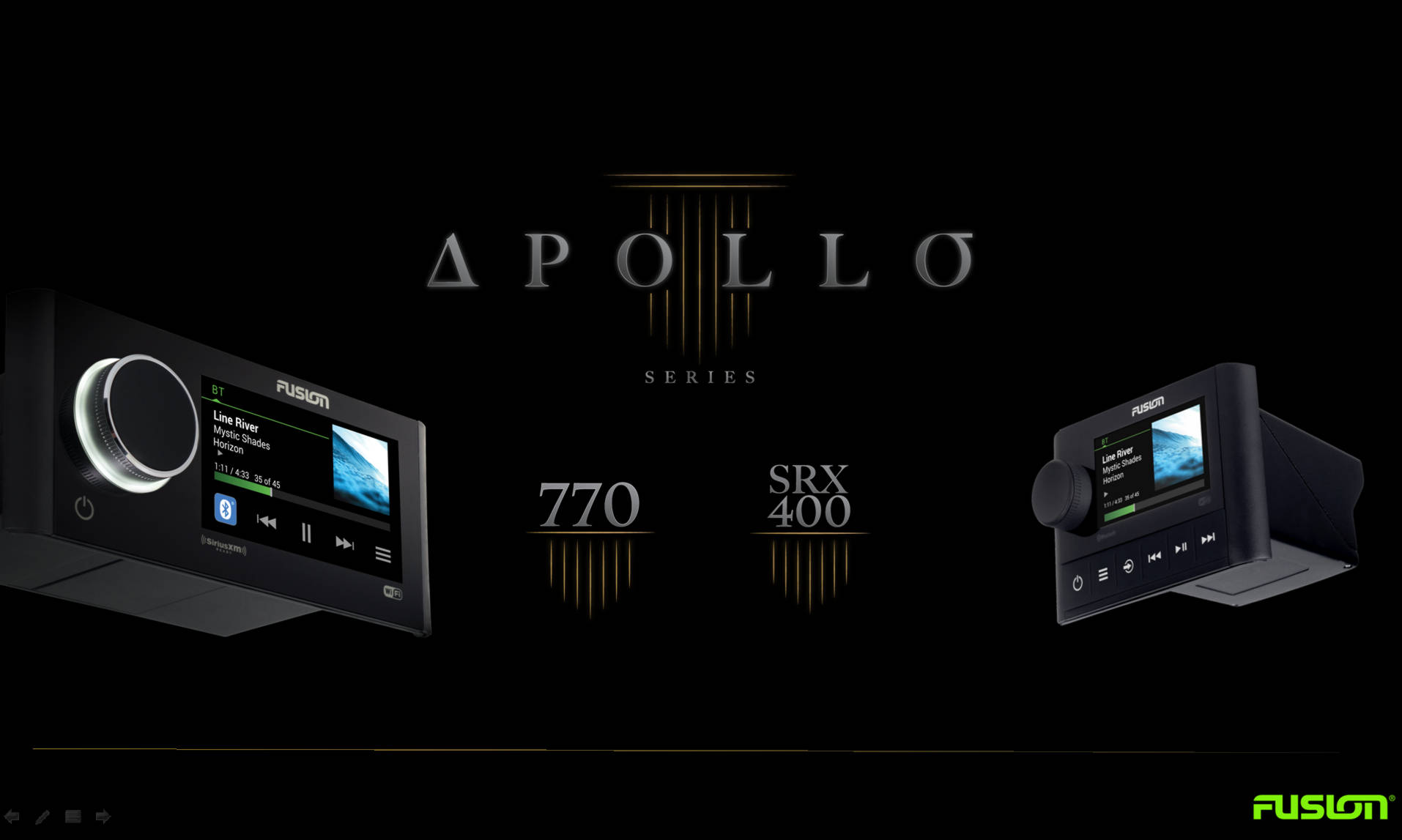

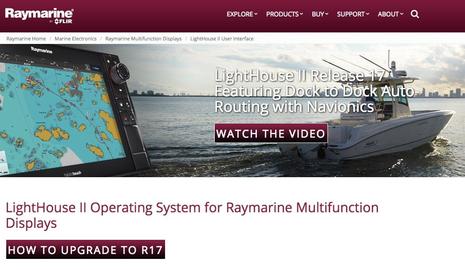
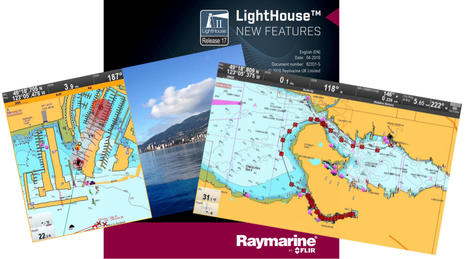








PS I updated the test e7 on Gizmo to L5 no problem, and am glad to see some less publicized features like improved N2K Source Selection (still a Ray weakness) and diagnostic N2K data logging. But the e127 and further testing will have to wait as I’m headed back to Maine tomorrow and won’t return to Gizmo for at least a month. Sigh ;-(
Incidentally, the “FLIBs redo” title is because I intend to publish all the tweets I did at the show in this visually better and more annotated format.
I tooo was excitd about the update, but there does not appear to be any documentation yet on the IP camera formats, and which standards they should conform to.
I also noticed that improved alarms were mentioned, (perhaps an overheating engine alarm) but again no documentation yet 🙁
Did you look in the new (10/2012) “a, c & e Series Installation and Operation Handbook”? I searched it on “IP Camera” and saw numerous references, though no specifics on formats and standards supported. Are there several?
Manual download here: http://goo.gl/E46k0
IP Camera Product Requirements:
– Must support H.264 video compression
– Must support RTSP (Real Time Streaming Protocol)
– Must support ONVIF (ONVIF User Authentication must be disabled)
– Must have DHCP enabled & Dynamic IP set to ON
– Supports up to 720p resolution
Ben, I have a low tech solution for cruisers to be able to stream live video through open access points. Just get your boat a Skype account and turn on auto-answer. Set your security, or which ever, camera as the Skype video source. Skype up the boat from any phone or computer with Skype app loaded and free live streaming through any access point. Quality is great. Confirm all is well and hang up. Easy as that. Of course you must leave your computer on for this to work.
I am really exited about the fuel manager. I have an e7 and an e7d hooked up to a Suzuki DF250 in my little 22′ cabin cruiser and I’m very happy with them so far (installed them this spring). It’ll be interesting to see how accurately the e7’s can calculate total fuel used based on the fuel flow.
The boat is out of the water and in in-door storage for the winter, so I wont install the latest update until spring.
Just thought I’d mention this as well:
I got the small Suzuki electronic instrument (a Lowrance LMF-200 with a Suzuki badge) in addition to the e7’s. (I needed it to configure the engine interface and having another screen to display data doesn’t exactly hurt).
The problem is that for fuel economy it uses the selected units for fuel flow (liters and nautical miles in my case), but it uses American convention and shows it as nautical miles pr liter. In Norway we use exactly the opposite, liters pr nautical mile.
The new, updated, PDF-manual isn’t clear on this, but I do REALLY hope I can set up the fuel economy data to show something I don’t need a calculator to make any sense of…
Thanks anonymous, I’ll give it a try on Friday. 🙂
Hi Kenneth,
I just wanted to let you know that the fuel manager in our LightHouse v5 software allows you 3 selections for units: distance per volume, volume per distance, or liters per 100km. I think that solves what you were asking about.
You can also select your volume units to read out as US Gallons, Imperial Gallons or Liters.
Jim McGowan, Raymarine, Inc.
That sounds great! Can’t wait for the next season so I can test it.
Thanks for the information Jim!
Cool! FLIR and Simrad just announced “the integration of FLIR’s M‐Series Premium Thermal Night Vision Systems with the Simrad NSE Network Navigation and NSS Touchscreen multifunction displays. Now these Simrad multifunction displays will include seamless integration and control of FLIR’s entire M‐Series lineup…”
The press release has no further details about the integration — and I wonder if it will be as sophisticated as Raymarine’s or Furuno’s latest, but this is certainly more proof that FLIR is serious about its “two brand” strategy. Which is good news for boaters, I think.
I’m gobsmacked! (Tip of hat toward the U.K.) While Raymarine was releasing one great Lighthouse update after another, apparently the lads and lassies were also developing an entirely new Lighthouse II, announced today:
http://www.raymarine.com/view/?id=8734
Yes, indeed, a whole new chart engine that supports NOAA raster and vector cartography, all of which will be free to owners of a, c, e, and gS displays in December! Plus a bunch of goodies like an auto databar hide feature that will make your screen all chart and/or radar, etc.
I get a demo on the water Saturday morning in Lauderdale.
Sounds & looks great, Ben – I’m looking forward to your report on the reality..:-)
Ben, please see how this effects the Evolution Auto Pilot screens. Thanks!
John, the EVO autopilot controls in LightHouse II are the same as what you see in the current LightHouse. You don’t need a separate AP control unless you want access to the fishing manuevers.
Hartley, I saw LightHouse II underway today and even the beta is handling NOAA vector and raster data with speed. It looks good too. More to come.